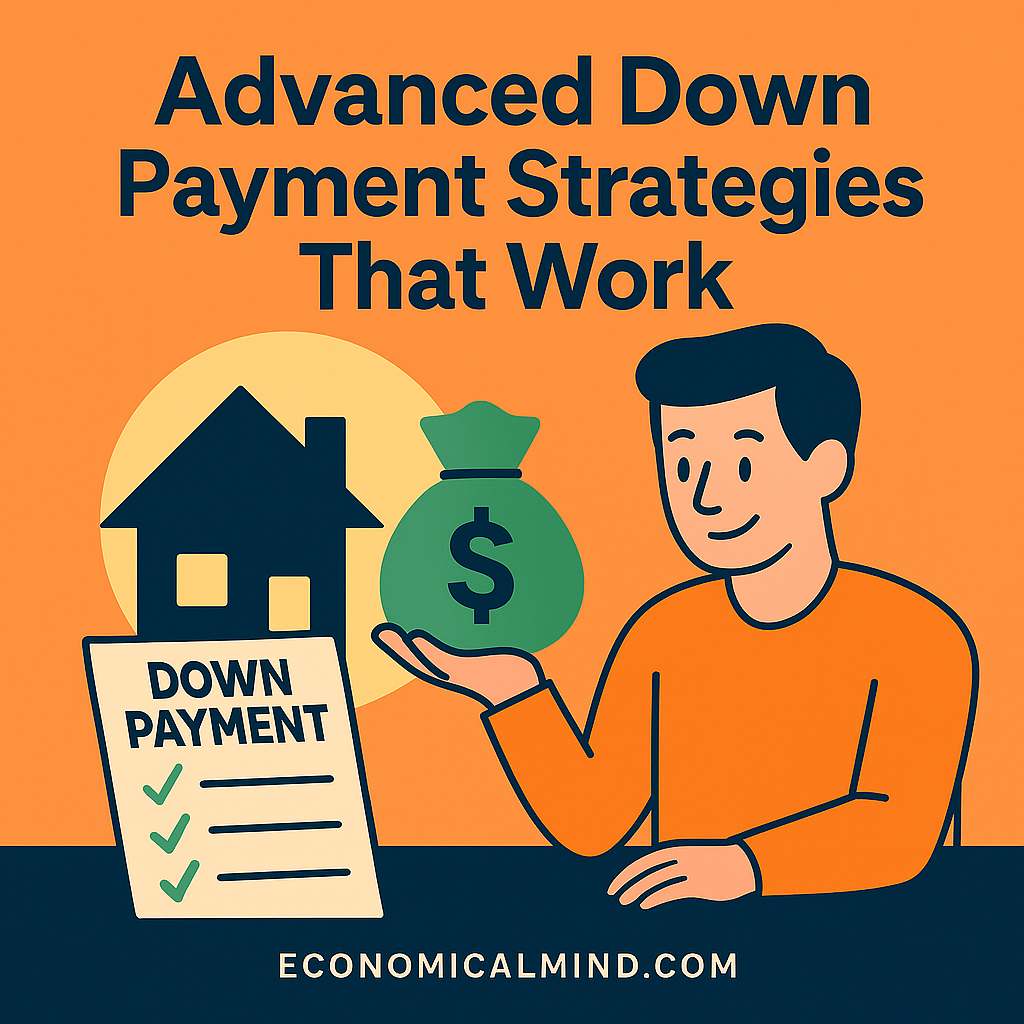
Saving for a down payment is one of the biggest hurdles to homeownership — but with the right strategies, it doesn’t have to take years. Advanced down payment strategies go beyond traditional saving advice and focus on leveraging tools, programs, and smart financial planning to get you closer to owning your first or next home.
Why the Down Payment Matters
Your down payment is the foundation of your mortgage. The more you can put down, the less you’ll owe, and the better your interest rate and loan terms may be. But the “20% rule” is not absolute — today’s mortgage landscape offers flexibility, creative financing, and assistance programs designed to help qualified buyers.
Strategy #1: Mix High-Yield Savings with Low-Risk Investments
Traditional savings accounts can be slow to grow. Consider combining a high-yield savings account with low-risk investment vehicles to make your money work harder:
• High-Yield Savings Accounts (Ally, SoFi, Marcus) – 4–5% APY on average.
• Certificates of Deposit (CDs) – Lock in higher rates for short terms.
• Treasury Bills (T-Bills) – Government-backed and flexible for short-term goals.
• Money Market Funds – Offer both liquidity and returns above traditional savings.
This approach balances growth with accessibility, allowing you to earn more without risking your home fund.
Strategy #2: Leverage Down Payment Assistance Programs
Thousands of programs exist across the U.S. to help buyers overcome upfront costs:
• FHA Down Payment Assistance – Offers as little as 3.5% down.
• USDA and VA Loans – Allow for 0% down if you qualify.
• State Housing Finance Agencies (HFAs) – Many states provide grants or forgivable loans for first-time buyers.
• Employer Housing Benefits – Some companies now match down payment savings like 401(k) contributions.
Websites like DownPaymentResource.com can help you identify programs available in your state.
Strategy #3: Automate and Separate Your Home Fund
Keep your home savings separate from regular accounts to avoid dipping into it. Automate contributions each paycheck — even small amounts compound faster than you think.
Tools and apps like Digit, Monarch Money, and YNAB (You Need a Budget) can automatically transfer money toward your down payment goal.
You can also label your account something motivational, like “Future Home” — a small psychological trick that boosts saving commitment.
Strategy #4: Tap Into Non-Traditional Funding Sources
Advanced savers often get creative when it comes to accelerating their home purchase timeline:
• Side Income Streams: Freelance work, tutoring, or short-term gigs can be fully allocated toward your down payment.
• Tax Refunds or Bonuses: Direct these windfalls instead of splurging.
• Family Gifts: Under IRS rules, individuals can gift up to $18,000 per year (2025) without tax implications.
• Retirement Account Loans: 401(k) loans can be used for home purchases, though this strategy should be used cautiously.
Strategy #5: Lower the Target — Then Reinvest Savings
You don’t always need 20% down to own a home. Even a 5–10% down payment can secure a good loan if your credit is strong and you have financial reserves.
By purchasing sooner, you can build equity through appreciation and reallocate future savings toward paying down principal or improving the property.
Strategy #6: Improve Credit to Reduce Required Cash
A higher credit score means better loan terms — and in some cases, a lower minimum down payment requirement. Use the months leading up to your purchase to:
• Pay bills on time and reduce utilization below 30%.
• Dispute errors on your credit report.
• Avoid new credit inquiries.
Improving your score by even 50 points can unlock better loan products and potentially save thousands in upfront costs.
Common Mistakes to Avoid
• Saving in accounts with low returns that don’t keep up with inflation.
• Overinvesting and risking principal in volatile assets.
• Ignoring closing costs and fees, which can add 2–5% to total expenses.
• Draining emergency funds to meet down payment goals.
The Takeaway
Advanced down payment strategies combine smart saving, financial tools, and leveraging external resources to make homeownership achievable faster than expected.
The key isn’t just saving more — it’s saving smarter, using automation, assistance programs, and financial products that work for your situation.
With the right plan, your down payment becomes less of a barrier and more of a bridge toward long-term financial stability and homeownership.
